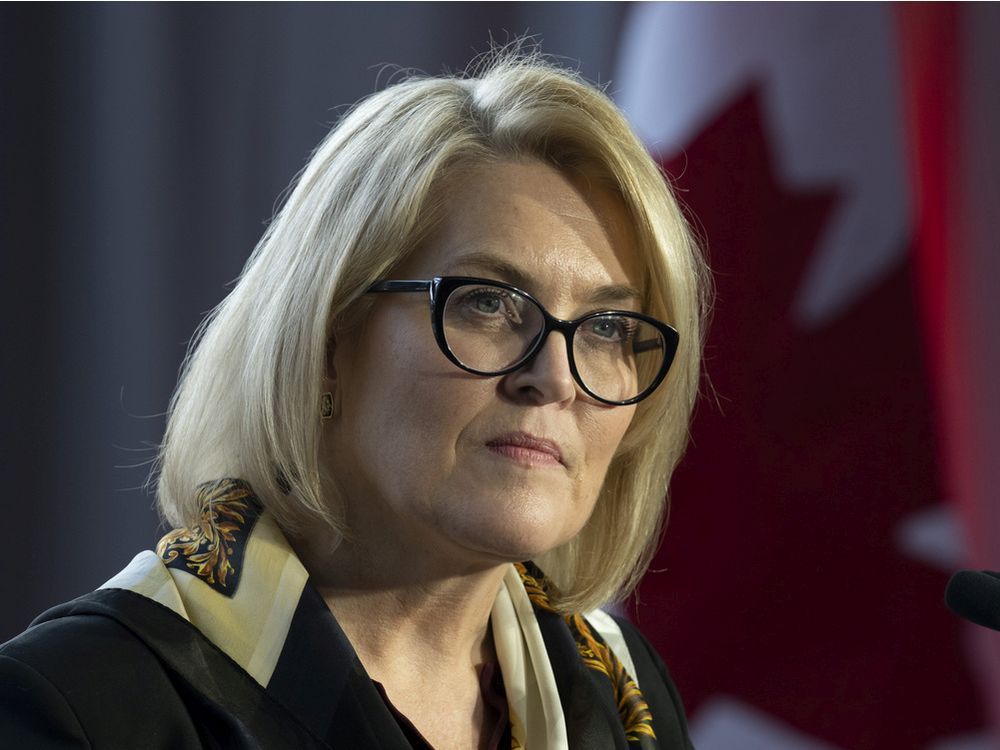crs1026
Superstar
From the RFEI, page 45I wasn't aware that had already been decided, but makes this assumption consistent.
- Paul
From the RFEI, page 45I wasn't aware that had already been decided, but makes this assumption consistent.
As the commenter on that article notes (the name seems familiar ... are you on UT?) HFR was launched as a simple project to rebuild track for a barebones dedicated service in TOM. First the expansion of length/scope to Trois Rivieres/Quebec City, then London/Windsor, then electrification, then higher track speeds, then a P3 which would require more studies and requests and shoving blame around ...
Canada is a global leader at studying HSR. We're somewhere around last in the developed world for actually building HSR, or any passenger rail at all, and more studies is just pushing the construction out. A project that's uncertain to be complete, with a number of political challenges, that needs to run through the Canadian Shield and thread through existing trackage in urban areas ... I'm not a procurement expert, but I can see companies saying "no" to a P3.
Splitting up VIA is a shame too. Their charter should be amended, sure, to accept funding from provincial governments. But their initial proposal was a sound way to get something built - they've operated on peanuts for the last 40 years, and the ridership is good *given how many shits we've given the agency*. But we're just pushing more studies down the road.
And to think that last year, election season made us think it was actually going to be built. /sigh
Guys, you know that California 's high speed railway has been talked about being built since the 90's? And it's finally being built (might not be finished).Sorry academic-speak: the hold up problem (and closely related incomplete contract problems) are a big topic in economics research. If one party can't count on the other reneging on an agreement ex post in some way, or extract appropriate damages, collectively valuable investment projects won't take place. One solution is to make "specific" investments, which essentially means investments that aren't transferable to other uses. I can't easily move streetcar tracks after the fact, but I can easily reroute buses.
Indeed, Terence Johnson is known here as @TerryJohnson and elsewhere as the President of Transport Action Canada:As the commenter on that article notes (the name seems familiar ... are you on UT?) HFR was launched as a simple project to rebuild track for a barebones dedicated service in TOM. First the expansion of length/scope to Trois Rivieres/Quebec City, then London/Windsor, then electrification, then higher track speeds, then a P3 which would require more studies and requests and shoving blame around ...
high frequency train The project is "real", says the Minister of Transport

PHOTO ALAIN ROBERGE, LA PRESSE ARCHIVES
Transport Minister Omar Alghabra during a press conference about high frequency rail, March 22, 2022
(Ottawa) The high-frequency rail project is starting to take a little more shape. So much so that the federal government plans to launch a call for tenders next fall to companies wishing to carry out this project, the largest in the country's history.
Posted at 8:00 a.m.
JOEL-DENIS BELLAVANCETHE PRESS
Transport Minister Omar Alghabra is adamant. The high-frequency train, which should connect Quebec and Windsor, is well underway, even if there are still several steps to go.
“The high-frequency train is no longer a vague concept. It starts to take shape. It's real,” said Minister Alghabra in an interview with La Presse to provide an update on this file.
Several companies interested
This project, in which Ottawa has already invested or set aside a billion dollars, is obviously arousing a lot of interest from businesses. In the spring, the Department of Transportation issued a call for Expressions of Interest. In all, 54 companies responded to the call while some requested clarification on certain elements of the project, including the roles and responsibilities of government and the private sector.
At the beginning of next year, Ottawa intends to launch a call for qualifications before proceeding to the formal call for tenders in the fall. Mr. Alghabra indicated that he would not be surprised if a consortium formed by companies showed up during the call for tenders.
The federal government has decided to create this year VIA TGF, a subsidiary of VIA Rail, to oversee the execution of the project. The members of the board of directors of this subsidiary will be appointed shortly.
“It's such a massive project — the biggest infrastructure project in the country's history — and you have to go through several steps before you break ground,” he insisted.
He said the high-frequency train, which will be largely electrified except in urban centers due to existing infrastructure, will have its own corridor of new and dedicated tracks that will stretch some 1,000 kilometers.
The first phase will connect Quebec and Toronto, with stops in Trois-Rivières, Montreal, Ottawa and Peterborough. The second phase will connect Toronto and the city of Windsor. The Minister challenges companies to come up with a project that would allow the train to reach a cruising speed of 300 km/h.
"We hope that the construction will start in 2027 or 2028. And that the project would be finished in the early 2030s, either 2032 or 2033." - Omar Alghabra, Federal Minister of Transport
The Minister points out that the idea for such a project was launched in 2017, but has started to really gain momentum in the last two years.
“Right now, we are focusing on phase 1 of the project, the corridor between Quebec City and Toronto. The second phase of the project between Toronto and Windsor will come later. »
"Unknown cost"
Mr. Alghabra refused to give an estimate of the costs of the project, as he had declined to do last March during a press conference at the Montreal maintenance center of VIA Rail, where he had formally invited the private sector to take part adventure.
“The cost remains unknown because things are changing rapidly. And it would be irresponsible of me to put forward a figure knowing that it will not hold water later, ”he said.
"It's a project that's going to be expensive, that's for sure. It is the largest infrastructure project in Canadian history. And there is a lot of work to do." - Omar Alghabra, Federal Minister of Transport
Currently, Canada is the only G7 country that does not have high-speed rail. The federal government assessed this option, but ruled it out because of the prohibitive cost (at least $65 billion for the Quebec-Toronto corridor) and the risks associated with operating a TGV during the winter season.
In an interview, Mr. Alghabra said he is very impressed with the rail network in France. “The French model is a very good example for us to follow as far as I am concerned. France has a very good rail network that connects regions and urban centers.
We are learning from France and that is very useful for us,” he said.
He recently met in Montreal with his French counterpart, Clément Beaune, on the occasion of the International Civil Aviation Organization conference. The main topic on the agenda was the high frequency train file.
Mr. Alghabra also indicated that he met with the leaders of Amtrak, in the United States. Amtrak also plans to build a new high-speed link between Philadelphia and Washington.
“The high-frequency train is no longer a vague concept. It starts to take shape. It's real,” said Minister Alghabra
I sure hope that's a bad translation ...He said the high-frequency train, which will be largely electrified except in urban centers due to existing infrastructure,
So 2027 is the new earliest construction start date.....Posted today at 8am. Translated article below from here.
It's real. I'm fairly sure he said earlier that they were aiming for 80-90 percent electrification but I cant find the source.I sure hope that's a bad translation ...

I sure hope that's a bad translation ...
I'm not sure I've seen it.No, because it's been public for over a year HFR would be only 90% electrified, which has been discussed here many times...
this policy doesn’t exist without a level of state (and via the EU Railway Packages, transnational) intervention and regulation which the Canadian political and transportation class has convinced itself is illegal, unconstitutional, heretical, and every other kind of bad -al.France is banning short-haul domestic flights for journeys that can be done in 2.5 hours or less by train. This sort of policy, combined with a tolled 401 (perhaps with exceptions for local trips to make it politically viable), would likely result in a successful implementation of high-speed rail in Canada. It would ideally have both city centre stations like Union and suburban stations in major cities that are more car-accessible.
Around the world there are a range of options for infrastructure, particularly rail infrastructure, ownership; from outright State ownership and operation to complete free market. When you consider CN, Air Canada and Petro-Can, successive Canadian governments have walked away from most everything that generates profit. Transit and passenger rail are the two exceptions because, well, they are anything but money-makers in most countries.this policy doesn’t exist without a level of state (and via the EU Railway Packages, transnational) intervention and regulation which the Canadian political and transportation class has convinced itself is illegal, unconstitutional, heretical, and every other kind of bad -al.
In Ontario, there was an opportunity to build out a larger provincially owned rail network which could have been leveraged for both freight and passenger, by having a provincial infrastructure manager maintain, improve, and dispatch the rails with private and public entities applying for track time. Instead, in the last decade or so alone, HSR SWO was siloed from both Metrolinx and ONTC and then expired, the opportunity to take over the Huron Central was passed up on, and the Orangeville and Ottawa valley rails were lifted rather than acquired and banked as operable routes.




